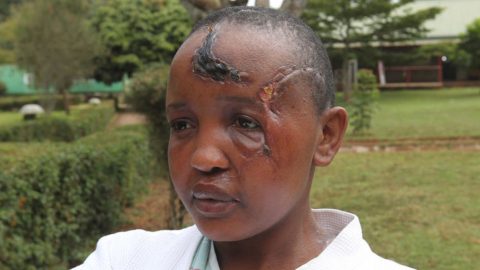

Women are disproportionately affected by COVID-19: fight against gender inequality in the face of a pandemic
Written by Sophie Maho Chan – Speechwriter, UCL
Approved by Graciano Masauso – President
AHO has long recognised the role of gender in health, not only from a biological standpoint but also in terms of how social, cultural, economic and political gender disparities come to shape overall health outcomes. This is a highly relevant issue in the current climate of a global pandemic. Biologically, studies have shown that COVID-19 seem to affect women to a lesser degree; on average, men have a 60% higher fatality rate than women. However, a closer look at secondary long-term impacts paints a strikingly different picture.
Women, who already shoulder most unpaid care work at home, are struggling with added responsibilities in the face of the pandemic. With school closures, overwhelmed health systems and stay-at-home orders, women are burdened with an estimated 4 hours of extra care work per day. Traditional values in Africa reinforce this disparity; in countries like Mali, women reportedly do 11 times more unpaid care work than men even under normal conditions. This, of course, includes cooking, cleaning, child care and elderly care, but in many regions of Africa also the collection of water and firewood, significantly increasing their risk of exposure to COVID-19. The recognition of this disproportionate burden is extremely important as it has long been at the centre of gender economic inequality. The pressure to do unpaid work at home often discourages women from joining and rejoining the formal economy as well as influence wage inequality and structural biases in employment. Many fear that the coronavirus may reverse recent progress in women’s economic empowerment.
However, women are also responsible for the majority of paid care work. In Africa over 60% of the health workforce is female and the number goes up to 91% in Egypt. This includes nurses, who are 70% female. Far outstripping the numbers of doctors, they are placed on the frontline of this global battle against the pandemic. It is also concerning that there have been numerous reports of unprotected, under-resourced nurses, further increasing their vulnerability to contracting the virus and adding to their mental health burden. Other health facilities staff with high exposure to the coronavirus such as cleaners, catering assistants and laundry workers are also predominantly female.
Looking at the broader, long-term economic impacts of the pandemic, there are more discouraging signs. In every country, women earn and save less as well as do more informal and part-time work than men. This means that women are not only financially disadvantaged to protect themselves in times of crisis but also have ‘less buffer’ for economic hits; they are less likely to be covered by insurance and often don’t meet the requirements of traditional governmental schemes targetted at aiding commercial businesses and formal employment. Models from past pandemics strongly suggest that men’s income return to normal much faster than women’s. This gender disparity also links to the type of jobs women are involved in. In Africa, in addition to healthcare, women predominantly occupy careers in air travel, hospitality, tourism, food and beverage and retail services, which are all heavily impacted by lockdowns and travel restrictions. Today, many African countries involved in global value chains also rely on female employment — like Ethiopia’s textile manufacturing industry for Western fashion brands — and with shops closing and global demands plummeting, job losses are becoming a reality.
Perhaps a more immediate cause of concern for women’s vulnerability in the pandemic is the increase in domestic violence. Many have reported surges in partner violence, sexual harassment and abuse of women and girls under lockdowns. For example, a Google search analysis suggests an exponential increase in numbers of people seeking help for domestic violence and sexual harassment in Africa since the onset of COVID-19. Similarly, in Kenya, calls for help against domestic violence have jumped by 34% in the first three weeks of the implementation of the curfew. Such findings are supported by studies of the 2014-2016 Ebola epidemic, which also led to a dramatic increase in domestic, gender-based violence across the continent. Stress, alcohol consumptions and financial adversities have been commonly linked to these patterns.
Indeed, reflecting on the Ebola epidemic offers further insights into other potential issues. For instance, studies have shown that school closures during the Ebola outbreak led to a rise in girls’ school dropouts and teenage pregnancy, decreasing their opportunities to enter the formal workforce. Furthermore, it has been demonstrated that childbirth deaths increased and contraception accessibility decreased following the outbreak, as resources got diverted away. With much of Africa and the world currently focused on not only directing funds to healthcare and research, but also restoring the formal economy, there is a high risk that history will repeat itself — unless lessons learned from the past are implemented immediately.
Having experienced Ebola, there is potential for Africa to do better this time around. Reasons women have been so disproportionately affected by pandemics and epidemics in the past include the invisibility of their unpaid work, the lack of gender-segregated data collection and the ultimate absence of their political voice. Thus, AHO recognises that efforts should be made to include female perspectives in decision-making, policymaking and data collection for COVID-19. Resources must not be diverted away from maternal and girls’ health; protection must be given to women against violence and overworking; and policies must ensure that women can continue to be educated and pursue formal careers. By first and foremost understanding the significant role gender plays and pinpointing areas of risk, AHO hopes to fight against gender inequality in the ongoing pandemic.


Featured Programme
Violence against women increased during Coronavirus lockdown
AHO has long recognised the role of gender in health, not only from a biological standpoint but also in terms of how social, cultural, economic and political gender disparities come to shape overall health outcomes. This is a highly relevant issue in the current climate of a global pandemic. Biologically, studies have shown that COVID-19 seem to affect women to a lesser degree; on average, men have a 60% higher fatality rate than women. However, a closer look at secondary long-term impacts paints a strikingly different picture.
Read More
